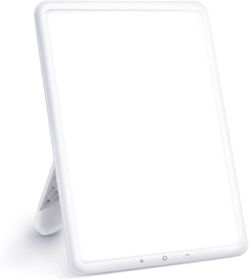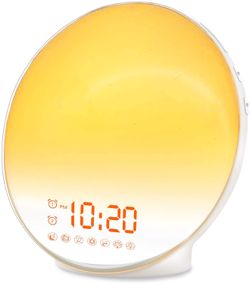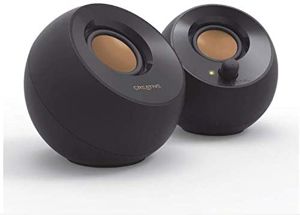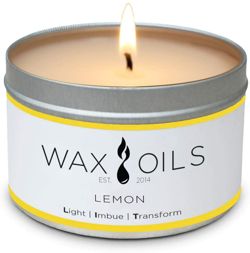As winter drags on, even the happiest writers can become depressed writers.
I felt it coming on in mid-November: that sluggish, tired feeling that often plagues me during these cold, gray months.
Some people refer to it as “SAD” (Seasonal Affective Disorder), but for many of us, it’s not a full-blown depressive disorder (like SAD can be). It’s a slowing of our energy, mental capacity, and motivation caused by the onset of cold winter weather and its accompanying gray days.
We humans need the sun. It not only helps our skin make vitamin D (critical for good health), but it also signals the release of hormones tied to energy, appetite, and good mood. During the long winter months when we don’t get as much exposure to the sun, we begin to envy the bears—we’d rather curl up in a cave and sleep the cold away.
I’ve endured this slow-down in years past, along with the accompanying drop in productivity and cheer. This year, when I felt it coming on, I thought, enough is enough! So I bought myself a “SAD” light.
Guess what? It works! I’ve now gotten in the habit of using it on every gray day (and there are a lot during the winter in my neck of the woods) and even on partially cloudy days, and I’ve noticed a significant uptick in energy and productivity.
Who says we have to be bears? We can be Arctic foxes and hares, darting about and getting things done. Then come spring, imagine what we will have accomplished!
 1. Light Therapy Often Recommended for Depressed Writers
1. Light Therapy Often Recommended for Depressed Writers
Light therapy lamps are designed to mimic sunlight, exposing you to the brightness you’re not getting from the real sun. This boosts brain chemicals linked to mood and sleep, helping you to increase your energy and maintain focus.
Also called “phototherapy,” light therapy works only when the light is at least 10,000 lux. A normal lamp won’t give you the same results as it doesn’t mimic the full spectrum of light found in sunlight like these therapy lights do.
Here’s the one I got, but there are a lot to choose from. Look for those that filter out ultraviolet rays, as these are the harmful ones that can damage your eyes and skin. Once you have it, position it about two feet away from your eyes at an angle—you don’t have to look directly into it—then leave it on for 20 to 60 minutes. Most people do well using it first thing in the morning.
 2. Dawn Simulator Helps You Wake Up Happier
2. Dawn Simulator Helps You Wake Up Happier
You can take light therapy a step further with a dawn simulator. This is a light device (often an alarm clock light) that gradually brightens for a set period (your choice).
It can not only make it easier to get out of bed, but it can set the stage for a more positive, energetic day.
There are also several of these to choose from. This one from the Jall Store is not only an alarm clock and a dawn simulator, but also an FM radio, nightlight, and stress reliever with seven natural sounds to help you fall asleep.
 3. Rebounder Gets Depressed Writers Out of Their Doldrums
3. Rebounder Gets Depressed Writers Out of Their Doldrums
I haven’t gotten one of these yet but I have wanted one for years. These little trampoline-like exercise machines allow you to exercise pretty much anywhere in your home, which helps chase away the blues. The jumping action they inspire stimulates the lymphatic system, helping to flush out toxins, bacteria, dead cells, and other waste products.
Exercise is one of the best ways to keep the blues at bay and to prevent any feelings of depression. Several studies have found that exercise is an effective treatment for depression—in some cases, just as effective as antidepressants.
In a 2019 study, researchers found that individuals who engaged in at least several hours of exercise each week were less likely to be diagnosed with a new episode of depression, even in the face of high genetic risk for the disorder.
While providing an easy, fun way to exercise, a rebounder also helps strengthen bones while working the core, leg, buttock, and back muscles. It puts less pressure on the foot, knee, and hip joints than running does, which is great if you’re starting to notice pain in these areas. The action on the lymphatic system is also thought to boost immune function.
This Stamina Rebounder is a bestseller on Amazon and folds up for easy storage. It comes with three online workout videos.
 4. Speakers Get the Good Vibes Going
4. Speakers Get the Good Vibes Going
Listening to upbeat tunes is a great way to chase away the blues. In a 2013 study, people improved their mood with cheery music.
In an earlier study, researchers reported that listening to certain classical works — including one by Mozart — helped ease the debilitating symptoms of clinical depression.
If you find yourself dragging through the day, put on some snappy tunes and see if you don’t feel better. These Creative Pebble USB-powered speakers enhance your computer speakers so you can turn up the volume and enjoy.
 5. Winter Boots Often the Best Tool for Depressed Writers
5. Winter Boots Often the Best Tool for Depressed Writers
Taking a walk during the icky winter weather isn’t easy, but it can help boost your mood and your energy levels. Study after study shows that getting out into nature is good for you in many ways.
In 2018, Harvard Health reported a strong connection between time spent in nature and reduced stress, anxiety, and depression. In a 2015 study, researchers compared the brain activity of healthy people after a 90-minute walk in either a natural setting or an urban one. Those who did the nature walk showed less activity in the part of the brain that processes negative emotions. An earlier 2015 study also showed that walking in nature helped lower the risk of depression.
Try to find a nearby park or area with trees. Even 20 minutes is enough to have beneficial effects. To make it more enjoyable, dress warmly. Since everyone has different tastes in boots I didn’t include any here, but get some if you need them. Having new boots around may be just the thing to inspire you to walk more!
 6. A Lemon Candle Brings Happiness Into the Room
6. A Lemon Candle Brings Happiness Into the Room
Depressed writers can use scent to chase away the blues. A small Japanese study of depressed patients found that a citrus fragrance (made mostly of lemon) lowered the dosages of antidepressants the patients needed.
It also boosted immune function.
Here’s a well-reviewed lemon candle available on Amazon. Other good mood-elevating scents include lavender, peppermint, jasmine, rosemary, and sandalwood.
 7. Bright-Colored Paintings Compensate for Gray Days
7. Bright-Colored Paintings Compensate for Gray Days
Color can make a big impact on your mood, and if you’re spending more time indoors because of cold winter weather, the colors around you could contribute to feelings of fatigue and sadness.
Studies show that the best colors for boosting mood are shades of orange, yellow, and gold. It’s best to avoid shades of gray or light blue, as these can echo the gray skies you’re seeing outside.
Though you can paint one or more walls to bring some energy inside, if you’re not ready for that level of commitment, try adding some colorful paintings or even pillows to brighten your writing nook.
This paint-by-number set by Paintry has the colors you need to energize your space. You have to paint it first, but that’s a good thing. Engaging in art therapy is another way to boost your mood.
Note: Smartphone apps can help too—check out our post, “Could a Smartphone App Help Ease a Writer’s Depression?”
How do you keep the winter blues away?
Featured image by Artem Podrez from Pexels.


Yes, there’s nothing like a walk to lift the spirits. It’s going to be bitterly cold here in Toronto this week, but I’ll go out for a walk as soon as the weather warms up a tad. 🙂
I hear you, Lydia. Cold here too!
Some practical and useful tips! Thanks for sharing, Colleen!
Thanks, Jan!